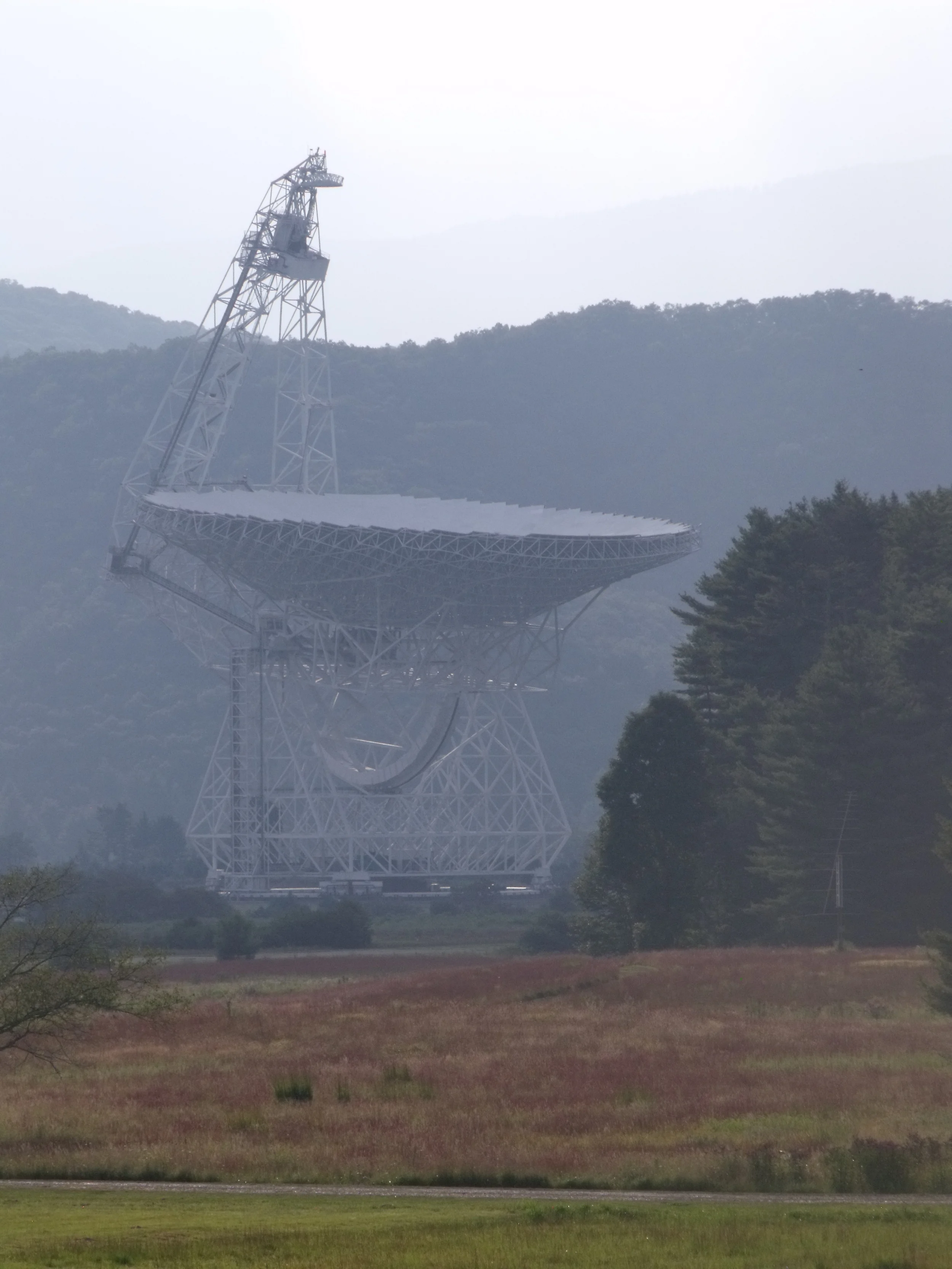The Largest Fully-Steerable Single-Dish Telescope in the World: The GBT
Olivia Wilkins
Construction of the Robert C. Byrd Green Bank Telescope (GBT) at the National Radio Astronomy Observatory (NRAO) in Green Bank, West Virginia, began in 1991, just a few years after the collapse of Green Bank's 300-foot radio telescope in 1988. With the end of the 300-foot telescope's tenure, the United States fell behind in radio astronomy technology; they were no longer the number one country in the field, falling into fourth place. West Virginia Senator Robert C. Byrd rallied for a new telescope to be erected in Green Bank, both to push the United States back ahead in the field of radio astronomy as well as to continue the robustness of the state's science education and public outreach involving space research.
Groundbreaking for the GBT on May 1, 1991 (Left to right: Senator Robert C. Byrd, National Science Foundation Director Walter E. Massey, Associated Universities, Inc. President Robert E. Hughes). Image from the NRAO.
After nearly a decade of construction, the GBT saw first light in August 2000, putting the United States back at the top of the radio astronomy technology roster. The GBT is the largest, fully-steerable radio telescope in the world. It operates over frequencies ranging from 290 MHz to 100 GHz, and can see about 85% of the skies surrounding Earth over a year. Because of its large dish size, the telescope is also extremely sensitive. Although it has low resolution, the GBT's sensitivity and size makes it a source of wonder for people of all demographics.
GBT Dedication Poster. Photograph by Mike Bailey; poster via NRAO/AUI.
Although the GBT's sensitivity and vast frequency range is attractive for a lot of astronomy projects, perhaps the most widely-acclaimed features of the GBT are its sheer size (so much that people often assume GBT stands for "Great Big Telescope" rather than Green Bank Telescope). The GBT stands 485 feet tall from its base to the top of its tall feed arm, making it about 60% taller than the Statue of Liberty. The instrument has a weight of 17 million pounds and rests on 16 wheels—an average of over 1 million pounds per wheel!
At 485 feet, the GBT stands almost as tall as the Washington Monument (555 feet) and taller than the Statue of Liberty (305 feet).
Perhaps the most impressive attribute of the GBT is its dish. At 100 meters by 110 meters, the dish has an area of 2.3 acres—the largest collecting surface in the world. The dish's large collecting area makes the telescope highly sensitive, as sensitive as your phone camera would be if it could zoom in to take a picture of a pepperoni on a pizza that was six miles away! Unlike most other telescopes that have parabolic dish-shapes centered around an axis, the GBT's dish is not centered about an axis. Rather, the dish is off-center, so to speak, allowing the telescope receiver to be positioned off to the side. This prevents loss of radio waves that would be deflected by the arms supporting the receiver if they extended over the dish.
View of the arm of the GBT from the back. Photograph by Olivia Harper Wilkins.
In the 6500 hours that the GBT observes the skies every year, scientists study the faintest objects in the Universe. The GBT has been used to find the majority of organic compounds known to exist in interstellar space and has been instrumental in timing pulsars. It can even observe gas clouds outside of the Milk Way and between other galaxies. The GBT is instrumental in a variety of fields, including astronomy, chemistry, physics, cosmology, and planetary science.
- Green Bank Telescope, NRAO website
- Green Bank Science Center, June 2013
